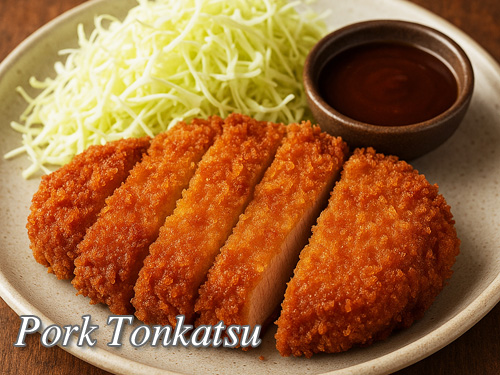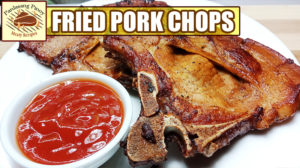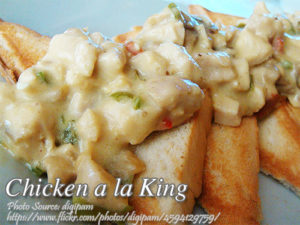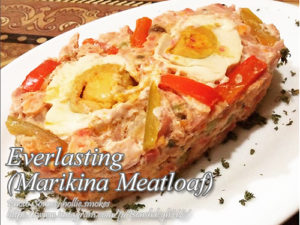This is I think is one of the favorite of Pinoys when it comes to Japanese food. Tonkatsu is a Japanese dish made from pork slices, coated with flour and eggs then breaded with Panko or Japanese bread crumbs. Second to fried chicken, fried pork chops is also the favorite food among Pinoys. Since pork tonkatsu tastes and looks similar to fried pork chops, that is the reason why it is one of the favorites.
The plus factor is the ease of cooking this dish and the very simple ingredients usually found in your kitchen and fridge. Also depending on your preference, you can either use pork chops or pork tenderloin in cooking tonkatsu. I also included a tonkatsu sauce recipe below so won’t have to search online to make the sauce.
Pork Tonkatsu: A Filipino Twist on a Japanese Classic
I still remember the first time I had pork tonkatsu. It wasn’t even in a Japanese restaurant—it was at my cousin Lito’s house in Makati, of all places. His wife, Ate Yumi, had just come back from a trip to Osaka and was raving about how simple yet delicious this Japanese-style breaded pork cutlet was. That afternoon, we all gathered in their small kitchen, the smell of frying oil in the air and the kids running around waiting for a taste.
They used pork chops—thinly sliced, seasoned with just salt and pepper—and coated them in flour, eggs, and Japanese breadcrumbs called Panko. Then came the deep-frying. Crispy, golden, and surprisingly not oily. It reminded me a lot of our local pritong pork chop, but this one had a crunch that made it feel extra special.
Why Pork Tonkatsu Is a Pinoy Favorite
Let’s be honest—fried food is close to every Filipino’s heart. From crispy pata to chicken joy-style fried chicken, we love that golden-brown crunch. This dish fits right in. Pork tonkatsu has a texture and flavor that reminds many of us of home, even if it’s technically a Japanese recipe.
And the best part? The ingredients are simple. No need for fancy marinades or imported items. You likely already have flour, eggs, and pork chops in your fridge. You can even make the tonkatsu sauce from scratch using pantry staples like ketchup, Worcestershire sauce, and sugar. It’s the kind of meal that looks impressive but doesn’t require a culinary degree.
Cooking Tips for a Perfectly Crispy Pork Tonkatsu
When Ate Yumi taught me how to make it, one of her key tips was to make small slits along the edges of the pork. At first, I thought it was just to make it look nice, but she explained it helps the meat stay flat while frying. Without those cuts, the pork tends to curl up like a slipper, and the coating doesn’t stick evenly.
Another tip she shared was not to overcrowd the pan. If you put too many slices at once, the temperature of the oil drops, and you end up with soggy breading. Fry in batches, and let each slice have its space. It’s worth the extra few minutes.
Use a wire rack or paper towels to drain the excess oil—this keeps the crust crisp instead of getting soggy. And always slice it before serving. Something about seeing those juicy pieces lined up beside a pile of shredded cabbage just makes the whole thing feel legit.
A Quick Word on Panko
If you’ve never used Panko before, it’s a type of breadcrumb that’s lighter and flakier than regular ones. It gives pork tonkatsu that signature crunch. My brother Jun once tried using regular breadcrumbs when he couldn’t find Panko, and while it still tasted good, it lacked that satisfying crisp that makes this dish stand out.
These Japanese breadcrumbs are easy to find in most supermarkets now, often in the international or baking section. Stock up—you’ll want to use them for other dishes too, like shrimp tempura or homemade chicken nuggets.
A Bit of Backstory: The Roots of Tonkatsu
Tonkatsu might sound like a traditional Japanese dish, but its roots are actually a little more Western. It was inspired by European-style breaded meat cutlets—think schnitzel—which made their way to Japan during the Meiji era. The Japanese, being brilliant at making things their own, adapted it with local ingredients and cooking methods.
Now, it’s a staple in many Japanese homes and restaurants. Served with shredded cabbage, rice, and that sweet-savory sauce, it’s become comfort food not just in Japan but all over the world—including Filipino households like mine.
Homemade Tonkatsu Sauce to Complete the Meal
No pork tonkatsu is complete without the sauce. I used to think you had to buy a bottle from the grocery store until my Tita Lorna showed me a quick homemade version. Just mix ketchup, Worcestershire sauce, soy sauce, and sugar. That’s it. It has the perfect blend of sweet, salty, and tangy that makes each bite of meat even better.
Now whenever I make this dish, I serve it with that same sauce—nothing bottled. It feels more personal, more special, and just tastes better when it’s made from scratch.
Final Thoughts
This recipe has become a go-to in our house. Whether it’s for a weekend lunch or a potluck with friends, pork tonkatsu always delivers. It’s easy, budget-friendly, and gives off that “wow” factor without being intimidating to cook.
So if you’re just starting out in the kitchen, don’t worry. With a few simple steps and some love, you can make this classic Japanese-inspired dish right at home. Try it once, and like us, you might just find yourself making it again and again.
How to Make Pork Tonkatsu
Ingredients
- 4 slices pork chops about 1/2" thick, remove bones
- salt and pepper to taste
- 1/2 cup all-purpose flour
- 2 pcs raw eggs beaten
- 1 cup panko or Japanese bread crumbs
- cooking oil for deep frying
Ingredients of tonkatsu sauce:
- 4 Tbsp. tomato ketchup
- 10 tsp. Worcestershire sauce
- 2 Tbsp. oyster sauce
- 1 1/2 Tbsp. granulated sugar
Instructions
How to Make Pork Tonkatsu:
- Make small cuts on the pork chops to prevent the pork from curling during frying. Season with salt and pepper on all sides and set aside for a few minutes.
- Heat the cooking oil in the frying pan about 2 inches deep. Heat it to 350°F. Coat the pork with flour and dip it in the beaten eggs. Roll in bread crumbs until well coated, shake a bit then deep fry.
- Do the same with the rest of the pork chops. But don't overcrowd the pan to avoid sticking the breading with each other. Cook the pork chop by batches.
- Fry for about 8 minutes or until the breading is golden brown and the pork inside the breading is cooked. When cooked, remove from the pan and put on paper towels or wire rack to drain excess oil.
- Slice the tonkatsu and serve with tonkatsu sauce and shredded cabbage.
To Make the Tonkatsu Sauce:
- Combine all the ingredients in a bowl and whisk until the sugar is dissolved.
Notes
Cooking Tips:
Don’t Skip the Slits on the Pork
Before breading, make small cuts along the edges of the pork chop or loin. This helps prevent the meat from curling while frying, so it cooks evenly and stays flat. It also ensures that the breading sticks better and gives a more even, crisp finish.Keep the Oil Temperature Steady
Make sure your oil stays around 350°F (175°C) for perfect frying. If the temperature is too low, the breading absorbs oil and turns soggy; too high and the crust browns too fast while the pork stays raw inside. Use a thermometer or test with a breadcrumb—it should sizzle gently, not burn.Use Panko for Maximum Crunch
Panko breadcrumbs are lighter and crispier than regular ones, giving pork tonkatsu its signature crunch. Toasting the Panko slightly before coating the meat can add even more texture and color. Don’t substitute if you want that authentic, golden coating that stays crunchy even after cooling.





